KIA Niro: Rear Shock Absorber Repair procedures
Kia Niro - First generation - (DE) (2017-2022) - Service and Repair Manual / Suspension System / Rear Suspension System / Rear Shock Absorber Repair procedures
Rear Suspension System / Components And Components Location
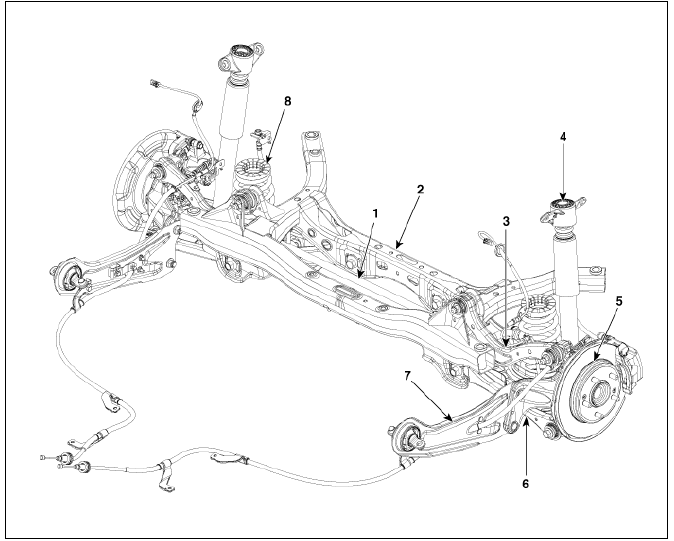
- Stabilizer bar
- Rear sub frame
- Rear upper arm
- Rear shock absorber
- Rear axle
- Assist arm
- Trailing arm
- Coil spring
Rear Shock Absorber Repair procedures
Removal
- Disconnect the battery negative cable.
- Remove the wheel nuts and tire.
Tightening torque: 107.9 - 127.5 N*m (11.0 - 13.0 kgf*m, 79.6 - 94.0 lb*ft)
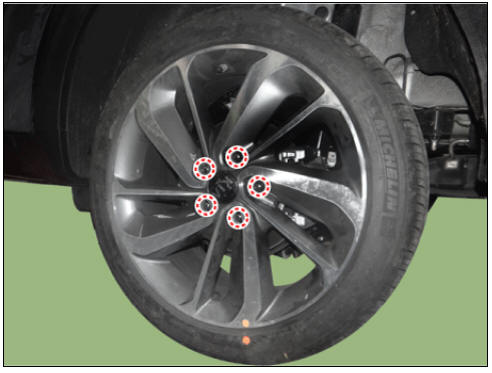
Warning
Be careful not to damage the wheel nuts when removing the wheel and tire.
- Loosen the rear shock absorber bolts (A).
Tightening torque: 58.8 - 73.5 N*m (6.0 - 7.5 kgf*m, 43.4 - 54.2 lb*ft)
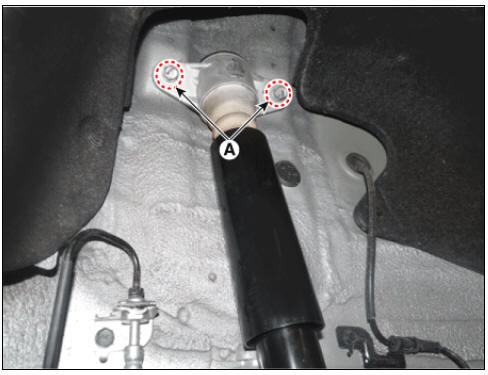
- Loosen the nut (A) and then remove the rear shock absorber.
Tightening torque: 98.0 - 117.6 N*m (10.0 - 12.0 kgf*m, 72.3 - 86.7 lb*ft)
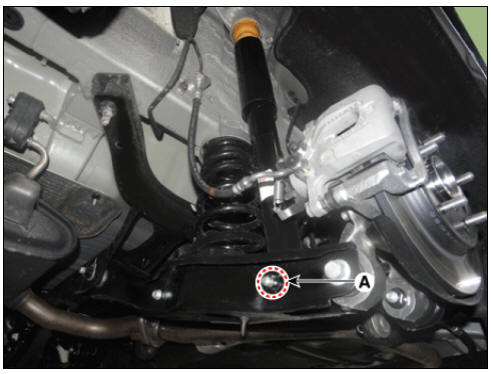
- Install in the reverse order of removal.
Disassembly
- Remove the insulator cap (A).
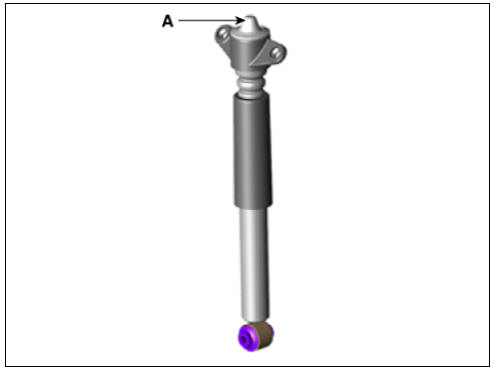
- Loosen the lock nut (A).
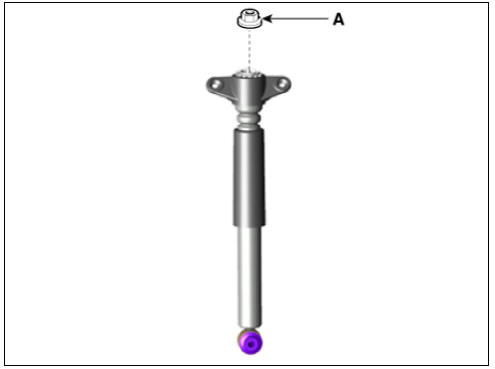
- Install in the reverse order of removal
Inspection
- Check the rubber parts for wear and deterioration.
- Compress and extend the piston rod (A) and check that there is no abnormal resistance or unusual sound during operation.
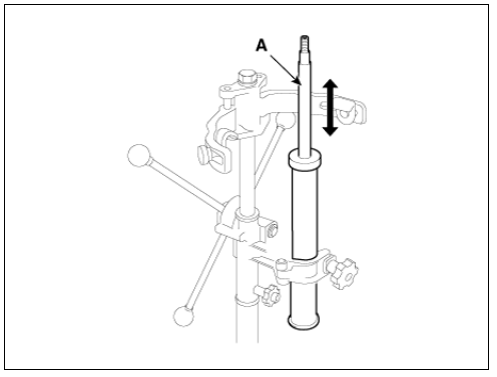
Disposal
- Fully extend the piston rod.
- Drill a hole on the (A) section to remove gas from the cylinder.
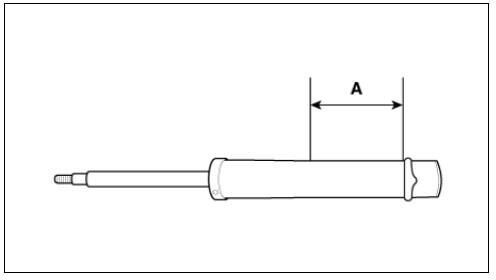
Notice
The gas released is harmless but be careful of chips that may stir up from drilling.
READ NEXT:
 Rear Lower and Upper Arm Repair procedures
Rear Lower and Upper Arm Repair procedures
Removal
Disconnect the battery negative cable.
Remove the wheel and tire.
Tightening torque: 107.9 - 127.5 N*m (11.0 - 13.0 kgf*m, 79.6 - 94.0 lb*ft)
Warning
Be careful not to damage the wheel nuts when removing the wheel and tire
 Rear Stabilizer Bar Repair procedures
Rear Stabilizer Bar Repair procedures
Removal
Disconnect the battery negative cable.
Remove the wheel and tire.
Tightening torque:
107.9 - 127.5 N*m (11.0 - 13.0 kgf*m, 79.6 - 94.0 lb*ft)
Warning
Be careful not to damage the wheel nuts when removing the wheel and
tire.
SEE MORE:
 Steering Column Shroud Panel
Steering Column Shroud Panel
Steering Column Shroud Panel Components and components
Steering column shroud upper panel
Steering column shroud lower panel
Steering Column Shroud Panel Repair procedures
Replacement
Warning
Put on gloves to protect your hands.
 AC charge
AC charge
* Actual charger image and charging
method may vary in accordance with
the charger manufacturer.
How to connect AC charger
Depress the brake pedal and apply
the parking brake.
Turn OFF all switches, shift to P
(Park), and turn OF
Categories
- Home
- KIA Niro EV, Hybrid - Second generation - (SG2) (2021-2024) - Owner's manual
- Kia Niro - First generation - (DE) (2017-2022) - Service and Repair Manual
- Contact Us
